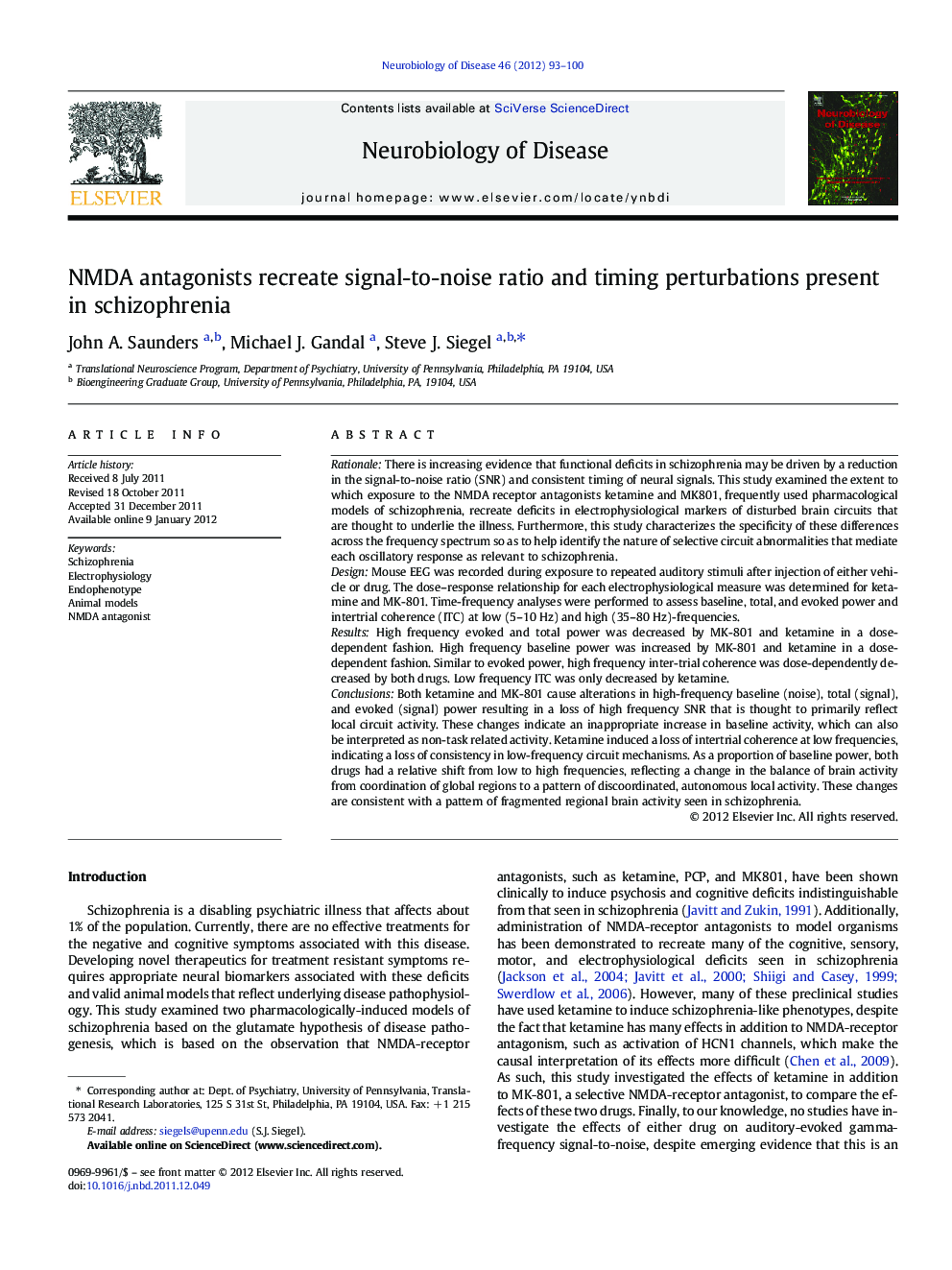| Article ID | Journal | Published Year | Pages | File Type |
|---|---|---|---|---|
| 3069489 | Neurobiology of Disease | 2012 | 8 Pages |
RationaleThere is increasing evidence that functional deficits in schizophrenia may be driven by a reduction in the signal-to-noise ratio (SNR) and consistent timing of neural signals. This study examined the extent to which exposure to the NMDA receptor antagonists ketamine and MK801, frequently used pharmacological models of schizophrenia, recreate deficits in electrophysiological markers of disturbed brain circuits that are thought to underlie the illness. Furthermore, this study characterizes the specificity of these differences across the frequency spectrum so as to help identify the nature of selective circuit abnormalities that mediate each oscillatory response as relevant to schizophrenia.DesignMouse EEG was recorded during exposure to repeated auditory stimuli after injection of either vehicle or drug. The dose–response relationship for each electrophysiological measure was determined for ketamine and MK-801. Time-frequency analyses were performed to assess baseline, total, and evoked power and intertrial coherence (ITC) at low (5–10 Hz) and high (35–80 Hz)-frequencies.ResultsHigh frequency evoked and total power was decreased by MK-801 and ketamine in a dose-dependent fashion. High frequency baseline power was increased by MK-801 and ketamine in a dose-dependent fashion. Similar to evoked power, high frequency inter-trial coherence was dose-dependently decreased by both drugs. Low frequency ITC was only decreased by ketamine.ConclusionsBoth ketamine and MK-801 cause alterations in high-frequency baseline (noise), total (signal), and evoked (signal) power resulting in a loss of high frequency SNR that is thought to primarily reflect local circuit activity. These changes indicate an inappropriate increase in baseline activity, which can also be interpreted as non-task related activity. Ketamine induced a loss of intertrial coherence at low frequencies, indicating a loss of consistency in low-frequency circuit mechanisms. As a proportion of baseline power, both drugs had a relative shift from low to high frequencies, reflecting a change in the balance of brain activity from coordination of global regions to a pattern of discoordinated, autonomous local activity. These changes are consistent with a pattern of fragmented regional brain activity seen in schizophrenia.
► Evaluate extent to which NMDA antagonists reduce signal-to-noise ratio (SNR). ► Evaluates extent to which ketamine and MK801 reduce evoked gamma power (signal). ► Evaluates extent to which ketamine/MK801 reduces baseline gamma power (noise). ► Discusses how signal and noise perturbations recreate reduced SNR in schizophrenia.
